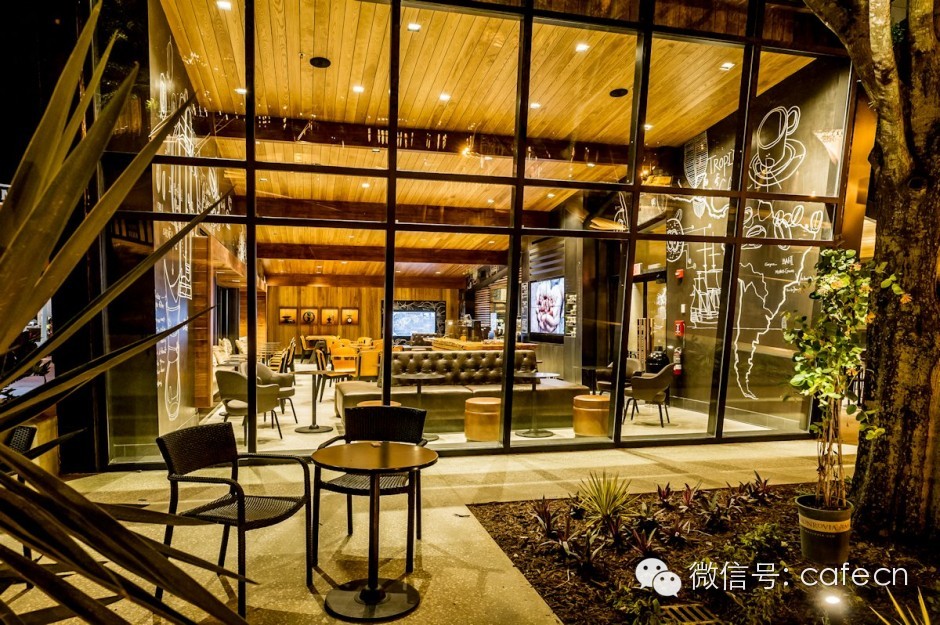Caffeic acid Caffeic acid is not equal to coffee
But according to the original IARC, it's not coffee, it's caffeic acid. Caffeic acid (Vol. 56; 1993). Caffeic acid Caffeic acid is not coffee at all, it is just a chemical acid in coffee, and this caffeic acid is also found in many other items.
What is caffeic acid? Caffeic acid (English: Caffeic acid) is an organic acid that can be dissolved in hot water and ethanol and slightly soluble in cold water. It is yellow-white crystal at room temperature, which has hemostatic effect but also has trace toxicity.
Coffee contains all kinds of acids, most of which can be found in other agricultural products. These acids include amino acids, such as asparagic acid, glutamic acid and leucine; carbonic acid, such as caffeic acid, chlorogenic acid and quinic acid; and fatty acids, such as acetic acid, lactic acid, citric acid, fumaric acid, oxalic acid, phosphoric acid and tartaric acid. From the taste point of view, when the concentration of amino acids exceeds the normal value, it will produce sweetness; when the concentration of carbolic acid exceeds the normal value, it will produce bitter taste; and high concentrations of fatty acids will produce sour taste.
Source of caffeic acid
Solidago virga-urea L.var.leiocarpa (Benth.) A.Gray whole grass, ^ a Rosaceae plant ^ b Crataegus pinnatifida BGE. ^ c fruit, ^ a disease-free plant ^ b slope willow Dodonea viscosa (L.) Jacq., ^ a Ranunculaceae plant ^ b cohosh Cimicifuga foetida L.^ c rhizome, ^ a Polygonaceae plant ^ b Eurasian water keel Pulypodium vulgare L.^ c rhizome, ^ a Rutaceae plant ^ b lemon Citrus limon burm. ^ c pericarp, ^ a Polygonaceae plant ^ b Polygonum aviculare L.^ c whole grass, ^ a Patrinaceae plant ^ b valerian Valeriana officinalis L.^ c root, ^ a labial plant ^ b thyme Thymus vulgaris L.C whole grass, ^ an Eucommiaceae plant ^ b Eucommia ulmoides Oliv.
Coffee acidity
Perhaps the most incorrect and misunderstood term used to evaluate the taste of coffee is "acidity". This is a quantitative term that refers to the relative strength of the acidic components in the liquid being evaluated. Although the coffee term "sour" is related to the term "acidic" that describes taste, the two terms are not interchangeable. In fact, coffee, described as "very sour", is not very acidic.
In chemistry, "acid" is defined as a compound containing hydrogen atoms. This hydrogen atom can release protons (hydrogen ions). This compound can be measured in quantity. For food technicians, almost all drinks are sour. Their relative strength is expressed by PH. The PH value is used to express the amount of free hydrogen ions in the liquid.

Coffee contains all kinds of acids, most of which can be found in other agricultural products. These acids include amino acids, such as asparagic acid, glutamic acid and leucine; carbonic acid, such as caffeic acid, chlorogenic acid and quinic acid; and fatty acids, such as acetic acid, lactic acid, citric acid, fumaric acid, oxalic acid, phosphoric acid and tartaric acid. From the taste point of view, when the concentration of amino acids exceeds the normal value, it will produce sweetness; when the concentration of carbolic acid exceeds the normal value, it will produce bitter taste; and high concentrations of fatty acids will produce sour taste.
1. Chlorogenic acid
From the point of view of concentration, the volume proportion of stone carbonic acid in coffee water is the largest. The most ingredient in this series is chlorogenic acid. There are three main groups of chlorogenic acid in coffee: coffee tannic acid, fermented quinic acid and double coffee tannic acid. Although few people have studied the sensory properties of chlorogenic acid, studies have shown that the amount of various acids (robusta is more than Arabica) and the proportion of various acids (some acids are more concentrated in immature and overripe beans than in normally ripe beans) play a major role in people's identification with a certain type of coffee.
The chlorogenic acid series also determines the taste of freshly brewed coffee. Chlorogenic acid is very unstable. The chlorogenic acid of coffee in the coffee pot breaks down into caffeic acid and quinic acid, especially when the temperature is below 80 ℃ or above 85 ℃. After decomposition, quinic acid will immediately show obvious bitter taste, caffeic acid will show sour taste. The sour taste and bitter taste are mixed to form a sour and bitter taste and the smell of old coffee.
2. Fatty acids
Another important acid is fatty acids. Although it is not the largest, it tends to produce the largest amount of hydrogen ions. The hydrogen ion measured by pH value is related to the sour taste of coffee. From a taste point of view, fatty acids give coffee a sense of brightness and aroma. This is why coffee with high acidity (with a low pH of 4.8 to 5.1) usually sells for a high price.
The order of the strength of acids in coffee is generally arranged as follows: tartaric acid. Citric acid, malic acid. Lactic acid and acetic acid. In addition, acid concentration also affects other major flavors of coffee water, especially sweetness. Each acid has its own flavor, such as lemon of citric acid, butter of lactic acid, apple of malic acid and so on. But they are more likely to be sensed by smell than by taste. Acetic acid in coffee is a special case. Its appearance is generally the result of the fermentation of washed coffee. The control of fermentation is the key to the quality control of this processing method. If too much acetic acid is produced, raw beans will produce a fruity flavor. The appearance of fruity flavor means that brewed coffee has an extremely disgusting fermented taste.
3. Organic acids
Compared with wine, there is a limited amount of acid in coffee that affects its taste. This is why the aroma of coffee is locked in the aroma of coffee. Because of the complex and changeable taste of the acidity in the wine, the process of wine tasting is an interesting taste movement process, while the cup review of coffee poses a challenge to the sense of smell because there are a variety of complex and volatile components in coffee.
Integrated from various encyclopedias and wikis, and an introduction to http://tc.wangchao.net.cn/baike/detail_2387827.html irac
Important Notice :
前街咖啡 FrontStreet Coffee has moved to new addredd:
FrontStreet Coffee Address: 315,Donghua East Road,GuangZhou
Tel:020 38364473
- Prev

Smarter intelligent coffee machine provides mobile phone app to control coffee brewing.
The Smarter-branded wireless coffee maker costs $150. it's not cheap and it's fun to support Wi-Fi. The Smarter coffee machine comes with apps that support Android and iOS platforms to remind users when they need to add water to their beans. The product's direct competitor is clearly targeting Mr.Coffee, which is working with Belkin. The difference between the two is Smarte.
- Next

Xi Jinping and Peng Liyuan drank Costa Rican coffee at the farmhouse.
Xi Jinping and his wife Peng Liyuan visited an ordinary coffee farmer in Costa Rica on June 3, 2013 local time. Watch coffee, smell coffee, taste coffee. Chinese President Xi Jinping and his wife Peng Liyuan, who are on a state visit to Costa Rica, visited the Zamora family of local farmers on June 3, local time. The picture shows Xi Jinping tasting the coffee produced by farmer Zamora.
Related
- A complete list of coffee bean names and their meanings! What is Yejia Shefi coffee? Where is Mantelin coffee?
- What grade does Arida Manor Kaduai coffee beans belong to? What treatment is Arida ASD slow anaerobic sun exposure?
- The milk tea cup becomes smaller?! Overlord Tea Girl launches a new "Return to Yunnan" series
- Accused of selling counterfeit and high-priced coffee beans! Well-known boutique coffee brand "Oukelao" bowed and apologized!
- How to make espresso dumplings? Can I eat coffee and glutinous rice balls together?
- Save the unformed and stagnant powder cakes in one second! What is the problem with stagnant water in the powder bowl of the espresso machine?
- What does hand-brewed coffee stop mean? Why is it not recommended to make coffee by hand?
- Is it normal to smell like coffee? Why does coffee smell like alcohol? What's wrong with the strong smell of cold extract ice dripping ice brewed coffee?
- How to solve the problem that hand-brewed coffee extraction takes too long? Why is the water flowing so slowly when making coffee?
- The main points of making Australian white coffee, the proportion details, how does Australian white properly foam and blend the flowers?

